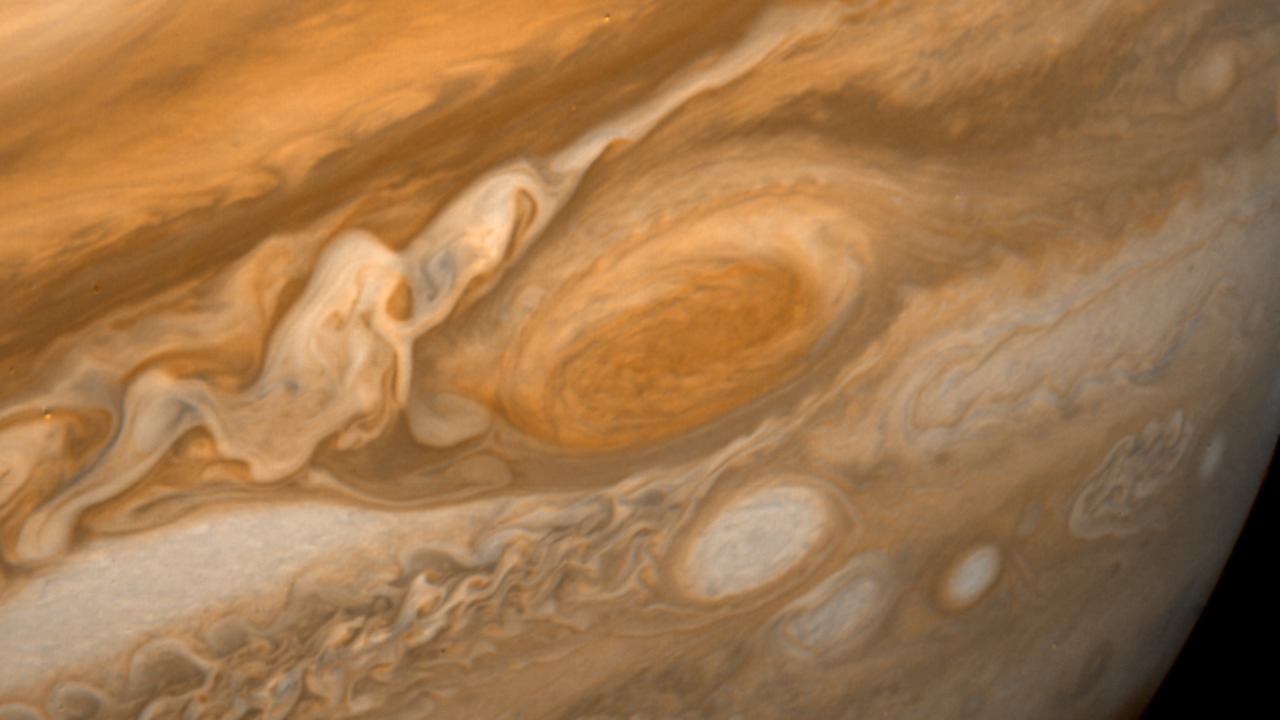
Jupiter’s volcanic moon, Io, is exhibiting geothermal activity far beyond what scientists had anticipated, with heat levels that defy previous models. This extreme thermal activity is driven by the intense tidal forces exerted by Jupiter, leading to volcanic eruptions across Io’s surface that are significantly more powerful than expected. In a related astronomical development, scientists have discovered a volcano-rich exoplanet that is hotter than some stars, offering a stark contrast to the dynamics within our own solar system.
Io’s Volcanic Landscape
The surface of Io is dominated by hundreds of active volcanoes, with the unexpected heat levels leading to more frequent eruptions and lava flows than were initially estimated during the Voyager mission in the 1970s. The moon’s silicate crust is reaching temperatures that are “much hotter than expected,” a phenomenon that can be attributed to the subsurface magma reservoirs that fuel constant geological upheaval.
Specific hotspots like Loki Patera are of particular interest, where thermal emissions indicate surface temperatures exceeding 1,000°C in localized areas. These observations, as reported by The Brighter Side, are reshaping our understanding of Io’s volcanic landscape.
Sources of Io’s Extreme Heat
Tidal heating is the primary driver of Io’s extreme heat. The gravitational interactions between Io, Jupiter, and neighboring moons Europa and Ganymede cause Io’s interior to flex, generating frictional heat that is “much hotter than expected.” Measurements from the Juno spacecraft have revealed interior temperatures approaching 2,000 K, far surpassing pre-2025 models of the moon’s energy budget.
Another contributing factor to Io’s “burning” atmosphere is the presence of sulfur and sulfur dioxide plumes. Recent infrared data has shown these plumes to be a significant part of the overall thermal activity on the moon.
Recent Observations and Data
The report on “Jupiter’s volcanic moon Io is burning much hotter than expected,” published on November 9, 2025, is based on new ground-based telescope and spacecraft telemetry showing an elevated global heat flux. Spectral analysis from the James Webb Space Telescope has confirmed hotter-than-anticipated emission lines from volcanic vents, further supporting these findings.
Quantitative updates have also been provided, such as the increased radiant energy output measured at over 10^14 watts. This data is reshaping timelines for Io’s eruptive cycles and challenging our previous understanding of the moon’s geothermal activity.
Comparisons to Other Volcanic Worlds
When compared to Earth’s volcanoes, Io’s heat output dwarfs that of Hawaii’s Kilauea by orders of magnitude. This is largely due to Io’s unique orbital position, which subjects it to intense tidal forces. On May 14, 2024, scientists discovered a volcano-rich exoplanet that is hotter than some stars, with surface temperatures exceeding 2,500 K due to perpetual volcanism.
While there are similarities in the tidal locking mechanisms between Io and this exoplanet, the extreme conditions on the exoplanet highlight Io as a milder but still unprecedented case within our solar system.
Implications for Io’s Evolution
The “much hotter than expected” burning on Io is accelerating the moon’s surface renewal. This process erases craters and maintains a youthful, dynamic geology over billions of years. The elevated heat is also driving a faster escape of volcanic gases into space, leading to a thinner ionosphere as predicted by 2025 models.
In the long term, Io’s intensified volcanism could have effects on Jupiter’s magnetosphere. The increased injection of plasma from Io could influence the auroral displays observed from Earth.
Challenges in Studying Io
Studying Io presents several challenges, including the radiation belts of Jupiter that complicate close-up missions. However, recent remote sensing has been successful in capturing the “burning much hotter than expected” phenomenon. Data from multiple missions, such as Galileo and Juno, have been integrated to validate the findings on thermal anomalies reported on November 9, 2025.
There is a need for future probes, such as proposed Europa Clipper flybys, to gather in-situ samples amid the moon’s hazardous, superheated environment. This will provide valuable data for further study and understanding of Io’s geothermal activity.
Broader Solar System Insights
The extreme heat on Io provides valuable insights into the tidal forces across the Jovian system, informing models for moons like Enceladus with subsurface oceans. The 2024 discovery of a “volcano-rich planet hotter than some stars” also suggests common processes in tidally active worlds beyond our solar system.
While Io’s hellish conditions rule out the possibility of life, they do refine our searches for habitable zones in volcanic exomoons. This underscores the importance of studying Io and other similar celestial bodies in our quest to understand the universe.
More from MorningOverview